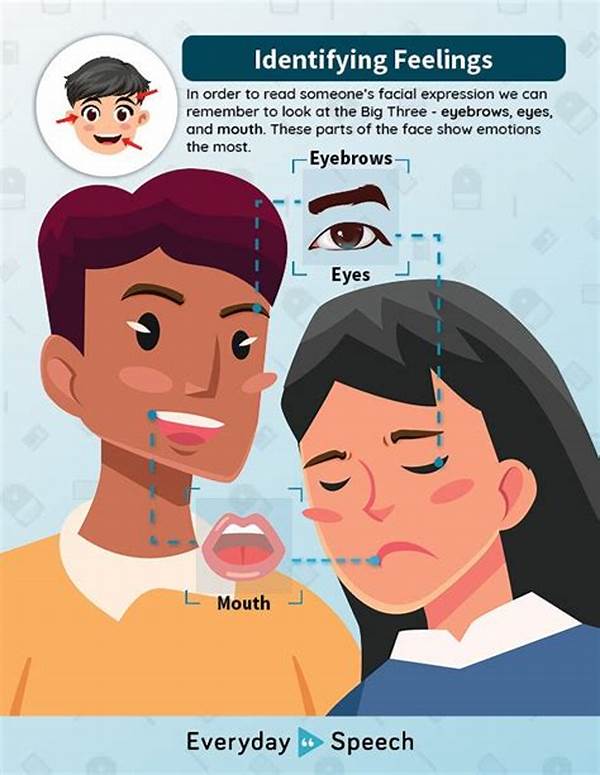Identifying Emotional Tone in Speech
Imagine meeting a friend at a local café, engrossed in deep conversation. There’s laughter, a few thoughtful pauses, and even a moment of remorse shared through the tiniest of voice inflections. The ability to identify emotional tone in speech is an art few have mastered, yet it’s a skill that can transform ordinary interactions into extraordinary connections. Like a famous music conductor interpreting a symphony, recognizing the emotional undertones in speech allows us to communicate at a much deeper level, turning conversations into meaningful dialogues that echo with emotional synchronization.
Whether you’re a business professional wanting to close a deal, or a caregiver seeking to provide solace, identifying emotional tone in speech can be a game-changer. Neuroscientists suggest that 93% of communication effectiveness is determined by non-verbal cues, which include tone of voice. The pitch, speed, and volume in speech can unveil a person’s genuine feelings, even when their words might say otherwise. Unlocking this potential opens doors to effective communication and understanding, strengthening relationships both personal and professional.
The Science Behind Emotional Tone Recognition
Placing an accurate label on someone’s mood based on how they talk might seem like magic to some and science to others. Studies reveal that emotional tone detection can be heightened by conscious practice and technology. Apps and advanced software are now being developed to assist in this task. For instance, artificial intelligence integrates speech recognition technology with algorithms capable of detecting emotional nuances, thereby helping businesses in customer service settings to respond empathetically based on the emotional context of a caller’s speech.
—Exploring Emotional Tone Recognition Techniques
Imagine walking into a room and being able to feel the emotional “temperature.” Identifying emotional tone in speech equips individuals with a similar capability, offering an edge in a myriad of contexts, from negotiating contracts to engaging in heartfelt discussions with loved ones.
Techniques to Master Emotional Tone Recognition
Firstly, one must cultivate an acute awareness of vocal elements in speech — tone, pace, and pitch. Each carries clues into the speaker’s emotional state. For instance, a slower pace with a lower pitch might suggest pensiveness or sadness, while a faster, high-pitched delivery might indicate excitement or anxiety.
Initiating an active listening approach serves as another cornerstone. Active listening entails focusing entirely on the speaker, observing non-verbal signals, and asking clarifying questions if necessary to understand the underlying emotions.
How Can We Train to Detect Emotional Tones?
Training programs and workshops likely offer practical sessions aimed at enhancing this skill, using real-life scenarios and role-playing exercises. Participants practice differentiating between subtle emotional cues, honing their ability to respond appropriately, creating a more empathetic communication environment.
—Discussion Points on Identifying Emotional Tone in Speech
—The Future of Emotional Tone Recognition
Innovations in Emotional Tone Detection
The journey of identifying emotional tone in speech is evolving rapidly, spurred by technological innovations and psychological research. Sophisticated tools equipped with machine learning and AI are emerging, creating new horizons in emotional intelligence development.
Integrating Technology with Emotional Intelligence
Organizations are increasingly adopting AI-powered tools capable of analyzing customer calls to determine emotion, tailoring responses to enhance customer satisfaction. Such advancements not only boost service quality but also redefine the engagement strategies, creating a more respectful and empathetic interaction model.
As societal reliance on digital communication grows, understanding emotional undertones hidden in speech becomes paramount. By honing this skill, individuals and organizations alike can evolve their communication strategies, promoting clarity, empathy, and alliance in interpersonal exchanges.
—8 Tips for Identifying Emotional Tone in Speech
1. Active Listening: Focus fully on the speaker without distractions.
2. Observe Non-Verbal Cues: Body language and facial expressions can provide context.
3. Pace Matters: Notice changes in the speed of speech—fast can signal excitement or stress.
4. Pitch and Volume Variations: High pitch and loud volume might indicate agitation.
5. Practice Empathy: Try to feel what the speaker is experiencing emotionally.
6. Ask Clarifying Questions: Confirm your interpretations by gently probing further.
7. Cultural Awareness: Understand that cultural backgrounds influence expression of emotion.
8. Reflective Feedback: Summarize and reflect back what you interpret to ensure clarity.
While understanding the emotional tone isn’t an exact science, with dedicated practice, it can be mastered to enhance every facet of human interaction. As we continue to navigate a world interconnected by digital conversation, developing this skill becomes an invaluable tool for personal and professional growth alike.

